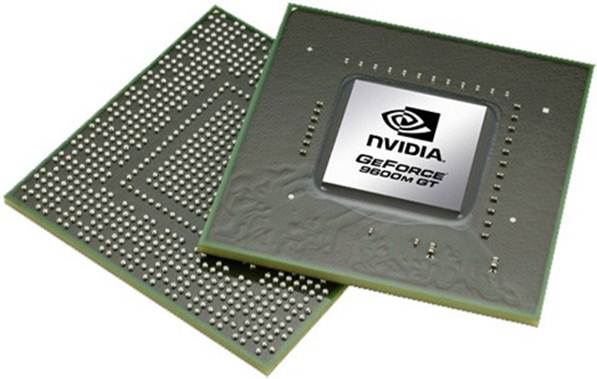With steam coming to Linux which way to turn
for gaming graphics joy?
Perhaps the most subjective component in
any hardware discussion is the one responsible for generating the graphics. This
is because the best choice for you will depend on how important graphics are in
your system. If you use the command line or a simple window manager, for
example, and expensive, powerful card will be a waste of money. This is because
it’s in the realm of 3D graphics that most graphical processing units (GPUs)
differ, and they often differ dramatically.

GPUs
Although 3D rendering capabilities used to
be important solely for running 3D games, the mathematical powerhouses
contained within a GPU are now used for lots of other tasks, such as HD video
encoding, the decoding, mathematical processing, the playback of DRM-protected
content, and those wobbly windows and drop shadows everyone seems to like on
their Ubintu desktops.
A better hardware specification not only
means that games run at a higher resolution, at a better quality and with a
faster frame rate – all of which adds to your overall enjoyment – it now means
you also get a better desktop experience.
Processing
Like CPUs, the development of GPUs never
seems to reach a plateau. Their power seems to double every 18 months, and this
is both a good and a bad thing. The good is that last year’s models usually
cost half as much as they did when they were released. The bad is that your
card is almost always out of date, even when you buy the most recent model. For
those reasons, and because most Linux gamers won’t want cutting edge gaming
technology when there are no cutting-edge titles to use it on (unless you
dual-boot to Windows), we’re going to focus our hardware on value, performance,
hardware support and compatibility.
At the value end of the market, we’re going
to look at models slightly off the cutting edge, including a couple of cheap
options and a few that are more expensive. For performance, we’ve run each
device against version 3.0 of the Unigine benchmark. This is an arduous test of
3D prowess, churning out millions of polygons complete with ambient occlusion,
dynamic global illumination, volumetric cumulonimbus clouds and light
scattering. It looks better than any Linux-native game, and it tests both for
hardware capabilities and the quality of the drives. As the Unigine engine is
used by a couple of high profile games, including Oil Rush, its results should
give a good indication of how well a GPU might perform with any modern games
that appear.
However, we also wanted to test our
hardware on games that you might want to play now. We tested the latest version
of Alien Arena, for example, as well as commercial india titles such as World
of Goo. More importantly, we also tested the kit with some games from Steam
running on Wine. Steam is games portal for Windows, and it has become the best
way of buying and installing new games for that operating system. There’s some
very strong evidence that Stream will be coming to Linux before the end of
2012. If that happens, its Wine performance should give us some indication of
how certain Steam titles will run on Linux.
Hardware
We tested five different GPUs. The first
two are integrated, which means they’re part of the CPU package rather than
being discrete cards that you slot into your motherboard. These CPU and
graphics packages were the norm in the old 2D days, but since 3D gaming
demanded more powerful GPUs integrated on die.

Speed
isn’t the only consideration. Rendering quality is also important. The Radeon HD6850
(right) has a problem with textures in Bioshock. The Nvidia GTX570 (left)
doesn’t
We started with Intel’s HD 3000 on the
i5-2500K CPU, and because Intel takes Linux driver development seriously, we
expected great results from a single package. The other integrated part we
tested has got a much better specification on paper; and that’s the one that
comes with AMD’s A8-3850 APU package (aka AMD Fusion). This is the rumoured
core of a PlaySation 4, and although the GPU on our model is likely to be less powerful
than Sony’s eventual successor, it will still be possible to combine its
computational power with another external Radeon card using the hybrid
CrossFire option enabled from the BIOS. It’s listed as an AMD Radeon HD 6550D,
and we used it with 512MB of assigned VRAM. The remainder of the cards we
looked at were discrete, and connect to a spare PCIe slot on the motherboard.
With this method, you need to make sure you’ve got two spare slots, because a
graphics card will often occupy an adjacent slot for extra cooling, and that
your power supply is capable of providing enough raw energy. We used a 600w
supply, with two separate 12v rails for powering graphics hardware. Our cards
needed additional power: a single additional six-pin connector, or two connectors
for the most power-hungry – the Nvidia card. The models we looked at were the
cheap AMD Radeon HD 6670 (which is one of the cards designed to work with the
A8-3850 APU), the more powerful AMD Radeon HD6850 and the Nvidia GTX570, and we
tested with both open source and proprietary drivers.
The
GPUs on test
For every device other than Intel, our test
system was the AMD A8-3850 2.9GHz CPU, with 4GB of RAM running a standard
64-bit installation of Ubuntu 12.04. We used 2D Unity to avoid any conflict
with the graphics acceleration.
·
Intel Sandy Bridge i5-2500K: $217.5
·
AMD Radeon HD 6550D: $118.5 (with A8-3850 CPU)
·
AMD Radeon HD 6670 1GB: $75
·
AMD Radeon HD6850 1GB: $135
·
Nvidia GTX570 1.25GB: $270